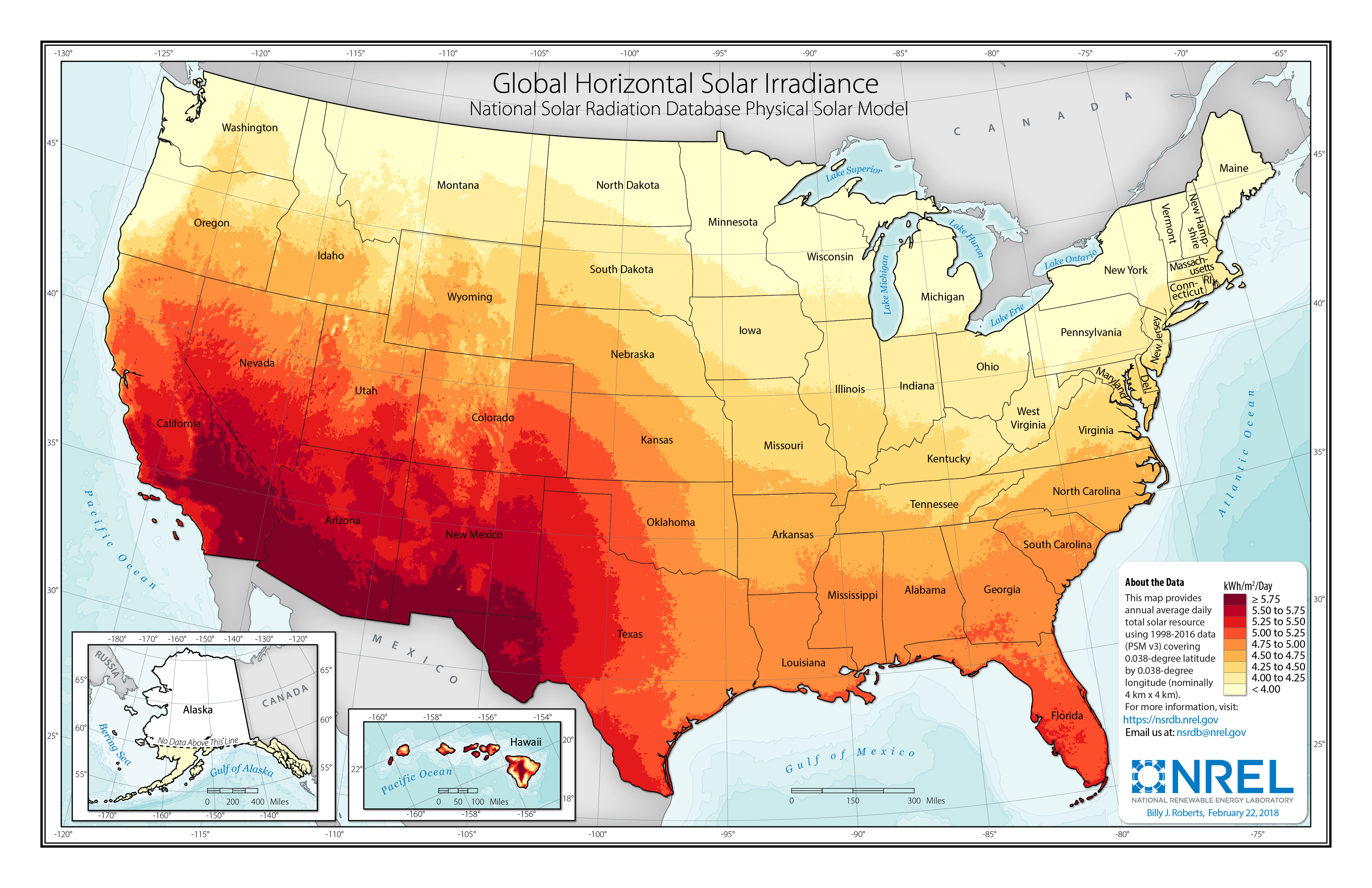== Why solar is not widely deployed? ==
There are three things working against solar in the USA:
a) Unlike fossil fuel where you pay as you go, with solar you got to pay upfront the cost of the system.
b) Until fairly recently, the cost per kW was pretty high. Fortunately the economies of scale are operating to bring the costs down. Today the most expensive component is labour,
not the panels themselves.
c) Policies and politics working against the solution.
So looking in the USA map, if you are in an orange/red area, the odds of solar making sense are
pretty good (depending on policies of the utility company, if they have some sort of net metering
so you can use the grid as some sort of 'battery' to save energy credits during the spring time).
From this map, it is possible to see that California + Nevada + Arizona + Utah + Colorado + New Mexico + Texas + Florida
would be excellent for harvesting solar power.
Heck, even Kansas + Oklahoma + small part of Louisiana could potentially be good places for solar energy harvesting.
The main issue is that some of these States are run by politicians who have deep interests in
the oil industry, so they tell people that 'solar doesn't work', 'Ocasio Cortez will come for your hamburguer' or some other BS.
Other States, like California, are controlled by the utility company. PG&E got the
CPUC (State agency controlling energy in California and whose members are appointed by the Governor) to change the rules for net metering this month. That will allow them to pay 11x less
for the energy that your panels generate than what they charge back when you access the energy during the night.
That will effectively kill solar in California as it will only make sense if you have the panels paired with a huge battery to store the excess power locally instead of the grid.
Isn't that ironic that solar roof got kick started in California by a Republican governor (Arnold Schwarzenegger) and it was killed by a democrat governor (Gavin Newsom)?
I made my move in July last year because I learned that the net metering rules would change, so I was grandfathered into the old system for the next 15 years IIRC.
Energy prices in California are absurd. I pay between $0.33 to $0.45
per kWh (i.e. 3x more than is typical in Texas), as a result the payback of the system will be in 5 to 6 years.
But considering that energy is 3x cheaper in Texas, the payback would be 18 years
(i.e. 3x 6 years = 18 years). A good solar panel has a warranty of 25 years, that is guaranteed
at least 7 years of profit by going solar.
Probably more, as the solar panels should keep going way past the guaranteed 25 years.
My dream is to become self reliant on energy needs and not depend on the utility to have power.
In conclusion: solar is not a magic bullet. It will not work everywhere. Also, it is not the Anti-Christ. It may make sense for
sure in some areas.
Do the math and research the subject. It may be a good solution for you if the conditions are right.


